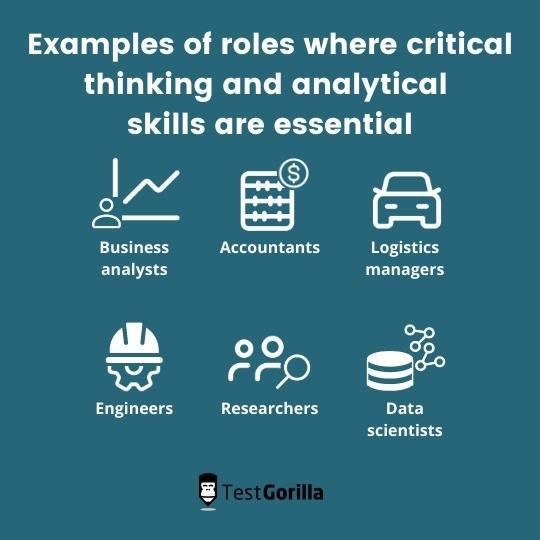Table of contents
- What is attention to detail?
- Why is attention to detail important in the workplace?
- What are some key traits and examples of attention to detail at work?
- The benefits of skill-testing: how and why should you assess attention to detail traits?
- Seven steps to assess candidates’ attention to detail
- How do skill tests work?
- Use attention to detail tests as part of your hiring process.
If you select a candidate who lacks attention to detail or doesn’t pay full attention to the finer points, their costly errors can negatively impact team morale, destroy your credibility, and erode the trust of your customers and partners.
For this reason, it’s important to make sure your employees pay attention to each detail and are capable of quickly spotting mistakes, whether they were made by themselves or other employees. This allows them to be thorough and accurate in their work, and take corrective action whenever needed, to successfully complete each project.
In this context, Attention to Detail tests can be an important component of the hiring process; they’ll prevent you from hiring employees who are prone to making mistakes.
This article discusses the significance of attention to detail and the benefits of conducting tests to assess it.
What is attention to detail?
In the workplace, attention to detail refers to how thoroughly and accurately a person performs their duties. An attention to detail test can measure this critical skill, which combines efficiency, thoroughness, and accuracy.
Typically, an employee with a high level of attention to detail would:
Write down essential information to avoid missing any facts or requirements
Produce work that requires minimal correction
Use a checklist or schedule to ensure all details are accounted for
Consider key policies to maintain consistency
Why is attention to detail important in the workplace?
A high level of attention to detail in the workplace can lead to high-quality work that is both consistent and reliable, but there are three more reasons why it is vital.
Avoid costly mistakes
Employees who fail to pay attention to detail can cost your business millions of dollars in losses; candidates who can spot mistakes early on can prevent minor errors from developing into major issues, potentially saving organizations money by resolving them on time.
Gain loyalty and increase customer retention
According to Forbes business consultant Pia Silva, you can build lasting customer relationships if your team pays close attention to detail. Employees who pay attention to the little details related to their clients will:
Quickly identify a customer’s needs
Take note of key metrics and recognize trends
Notice changes in customer’s behavior and purchases
This helps them build a strong relationship with each client, which results in repeat business, strengthens your brand, and leads to increased customer engagement and loyalty.
Increase productivity and avoid wasting time
Nineteen percent of executives say a lack of attention to detail reduces productivity and negatively impacts employee morale.
Teams who pay attention to detail avoid wasting time fixing mistakes, and as a consequence, can use their time more efficiently, increasing effectiveness and productivity.
What are some key traits and examples of attention to detail at work?
Some traits related to attention to detail in the workplace are:
Outstanding organizational abilities
Superior time management skills
These are sub-skills that contribute to attention to detail.
Exceptional organizational skills
The Balance Careers breaks down organizational skills into three categories: physical organization, effective planning, and teamwork.
Physical organization relates to the organization of space and goes well beyond having a tidy desk. Planning refers to effective resource selection and allocation, timeboxing, and a high level of adaptability. Teamwork entails creating a team structure and assigning duties efficiently.
Critical thinking and analytical skills
One of the top skills you’ll be looking for as a recruiter is critical thinking. Data analysis, source evaluation, and text analysis are three sub-skills that define critical thinking; therefore, look for these as a part of the attention to detail skill.
For instance, candidates with outstanding analytical abilities can critically assess the validity of a source. If they can use data to draw accurate conclusions or prepare a chart, for example, they have good critical thinking skills.
Top time management skills
Does your applicant know how to prioritize, set goals and manage their schedule? According to Indeed, time management is another sub-skill that is closely related to attention to detail.
For example, content writers may be given multiple deadlines for various projects; can they decide which tasks to prioritize to meet each of these deadlines?
And if you’re wondering how you can assess these skills, skill testing is the way to go. You can test your candidates’ time management skills in particular, and see how well they can plan and prioritize tasks.
Get the essential information you require on testing for attention to detail right here.
The benefits of skill-testing: how and why should you assess attention to detail traits?
Testing for attention to detail is crucial for recruiters: skills tests allow you to reduce unconscious bias throughout the hiring process and help you guarantee candidates are truly detail-oriented (this is essential because 50% of resumes contain exaggerations or even lies in them). Four benefits of using an Attention to Detail test during your hiring process are:
You’ll have no problems combining this test with other assessments, such as Communication tests and Critical Thinking assessments, to provide a well-balanced testing process.
Reliable attention to detail assessments are extremely accurate, created by experts, and assist you in hiring the most qualified talent; use them to compare applicants and determine who has the right degree of precision for your position.
Attention to Detail assessments can be used for a wide range of roles; whether you need to examine an administrator’s attention to detail or a bookkeeper’s precision in the workplace, attention to detail tests help you do that.
Attention to detail tests reduce the length of the hiring process and help you avoid lengthy interviews with candidates who simply don’t meet your criteria.
Seven steps to assess candidates’ attention to detail
Evaluating attention to detail doesn’t have to be a challenge. Here are the seven steps you can use to analyze candidates’ attention to detail, from resume screening to references.
Analyze candidates’ resumes and cover letters
Look for typos first, then for discrepancies between cover letters and resumes. These simple errors are a major red flag, as they show a lack of precision and attention to detail.
Obviously, applicants may be dealing with pressure at work or home when applying, so you might decide to let small errors slip. However, it’s still important to screen for all the details, which will indicate a candidate’s attention to detail.
Ask for a work sample that demonstrates their attention to detail
Work samples fall into two categories: samples from previous employers and samples as part of a test, which help you compare applicants. Here are some job samples you may request:
A copywriting task or project for marketing roles
A coding exercise for software engineering positions
An example blog post or outline for content writer roles
A sales pitch or presentation for sales roles
A journalistic interview for journalism positions
When asking for work samples, be transparent about why you need them, to not leave candidates feeling like they’re just asked to work for free. Of course, you shouldn’t use the samples you collect during the hiring process, or, if you decide to do that, you should inform your candidates in advance.
Use a reliable personality skills test
According to Martin Luenendonk for cleverism.com, there are two types of detail-oriented individuals: task-oriented people and naturally detail-oriented people. He claims their attention to detail is an important part of their personality.
Some personality types are naturally more detail-oriented. INTJ personality types are skilled at paying attention to detail, as are ENTJ, ISTJ, ESTJ, ISFJ, ESFJ, ISTP, and ESTP personality types. Personality tests can be used to assess candidates’ character traits and behavior, and also help you learn more about them.
Which personality tests should you use to assess attention to detail?
Choose the 16 personality types test to find out more about a candidate’s personality and how good they are at paying attention to detail. Alternatively, you can use the DISC personality test and select candidates who have a high conscientious/steady style or a high conscientious style.
Distribute attention to detail tests and assess candidates’ results
This is a simple step. Use a comprehensive skill-testing platform like TestGorilla that is developed by subject-matter experts to compare applicants and assess their skills.
Give candidates an essay-style custom question
Some skill test platforms allow you to send customized questions which are comparable to the work sample technique. You can use this technique to grade candidates by evaluating any inconsistencies, grammatical, or spelling errors.
Conduct structured interviews with your top candidates
When compared to unstructured interviews, structured interviews are far more likely to help you identify the right talent by offering all candidates the same set of questions for ease of comparison and standardization. Structured interviews are exactly what companies like Google are using in their hiring process.
Gather and check candidates’ references
Check how candidates’ references align with their skill test results and their resumes.
How do skill tests work?
Skill tests allow you to create custom questions and set the time limit accordingly (30 seconds is the minimum per question).
You can select up to five tests for each assessment, including Attention to Detail tests, which you then send to candidates. Once candidates take the tests, you’ll receive a report that gives you stats on their performance, including the average attention to detail score and who your top performers are.
Attention to detail (textual)
Whether you’re a hiring manager seeking to evaluate a candidate’s grammatical knowledge, or a recruiter looking to identify a candidate’s numerical attention to detail, Attention to Detail (textual) tests can help you assess whether applicants are able to:
Compare differences between statements
Verify the validity of information
Check the finer points in texts, including grammar or numerical data
Check the consistency of facts
Notice errors and ensure their work is error-free
Recognize any omissions in a set of information
When should you use the textual attention to detail test?
We advise you to use Attention to Detail tests before the interview in order to:
Pre-screen applicants efficiently and invite to an interview only the best ones
Design better interview questions
Textual attention to detail tests: what are their specific benefits?
Recruiters can also use textual attention to detail assessments as a benchmark for putting together training opportunities, making difficult selections between top candidates, and as preparation for the interview process.
For instance, if you’re hiring a content writer and the results show they lack the necessary skills to create outlines, you can use this information to design training sessions to teach them how to do research, create well-structured outlines and find reliable sources.
Attention to detail (Visual)
Whether you’re a hiring manager seeking to evaluate a candidate’s capacity to notice visual details, our Attention to Detail (Visual) test can help you. With it, you can evaluate whether candidates can:
Notice differences between images
Match visually identical images
Notice differences in designs
Spot the smallest details in images
Notice design errors
When should you use visual attention to detail tests?
Use the visual attention to detail assessment before the interview stage to:
Pre-screen candidates and shortlist the best ones
Create interview questions
For example, if you’re hiring a web designer, you can use test results to prepare for the interview and further assess eventual gaps or strengths.
Visual attention to detail test: what are its specific benefits?
Recruiters and hiring managers can use the Visual Attention to Detail test to determine whether a candidates’ skills will be a good fit for their organization. Additionally, the test can also be used to assess employees’ skills and create a training program to help them improve in specific areas.
If you need to train a web designer, for example, a test can help you assess the different areas where they need to improve, such as distinguishing design details and visual aesthetics like the layout and the flow of information, you can choose to focus on these areas during the training.
Use attention to detail tests as part of your hiring process.
Several recruiting issues are solved by good attention to detail testing. All you need to do to use attention to detail tests is:
Select the right test you need: it can either be the Attention to Detail (Visual) or Attention to Detail (Textual) test or both
Select up to 4 other tests to add to your assessment, in order to create a robust testing process
Customize tests to align them to your brand and create an outstanding candidate experience
Distribute the tests among candidates
Evaluate results and compare candidates
Shortlist the best applicants to invite them to an interview
Attention to detail can be tested together with other cognitive abilities or with different role-specific skills; you can also add personality and culture tests to the assessment.
Use these tests before the interview process to only spend time interviewing your best applicants. This way, you’ll be able to hire the right candidates with the highest level of precision and avoid costly hiring mistakes.
Try out TestGorilla’s Attention to Detail (Textual) test for free today and help make better hiring decisions, faster and bias-free.
Related posts
Hire the best candidates with TestGorilla
Create pre-employment assessments in minutes to screen candidates, save time, and hire the best talent.
Latest posts
The best advice in pre-employment testing, in your inbox.
No spam. Unsubscribe at any time.

Hire the best. No bias. No stress.
Our screening tests identify the best candidates and make your hiring decisions faster, easier, and bias-free.
Free resources
This checklist covers key features you should look for when choosing a skills testing platform
This resource will help you develop an onboarding checklist for new hires.
How to assess your candidates' attention to detail.
Learn how to get human resources certified through HRCI or SHRM.
Learn how you can improve the level of talent at your company.
Learn how CapitalT reduced hiring bias with online skills assessments.
Learn how to make the resume process more efficient and more effective.
Improve your hiring strategy with these 7 critical recruitment metrics.
Learn how Sukhi decreased time spent reviewing resumes by 83%!
Hire more efficiently with these hacks that 99% of recruiters aren't using.
Make a business case for diversity and inclusion initiatives with this data.























